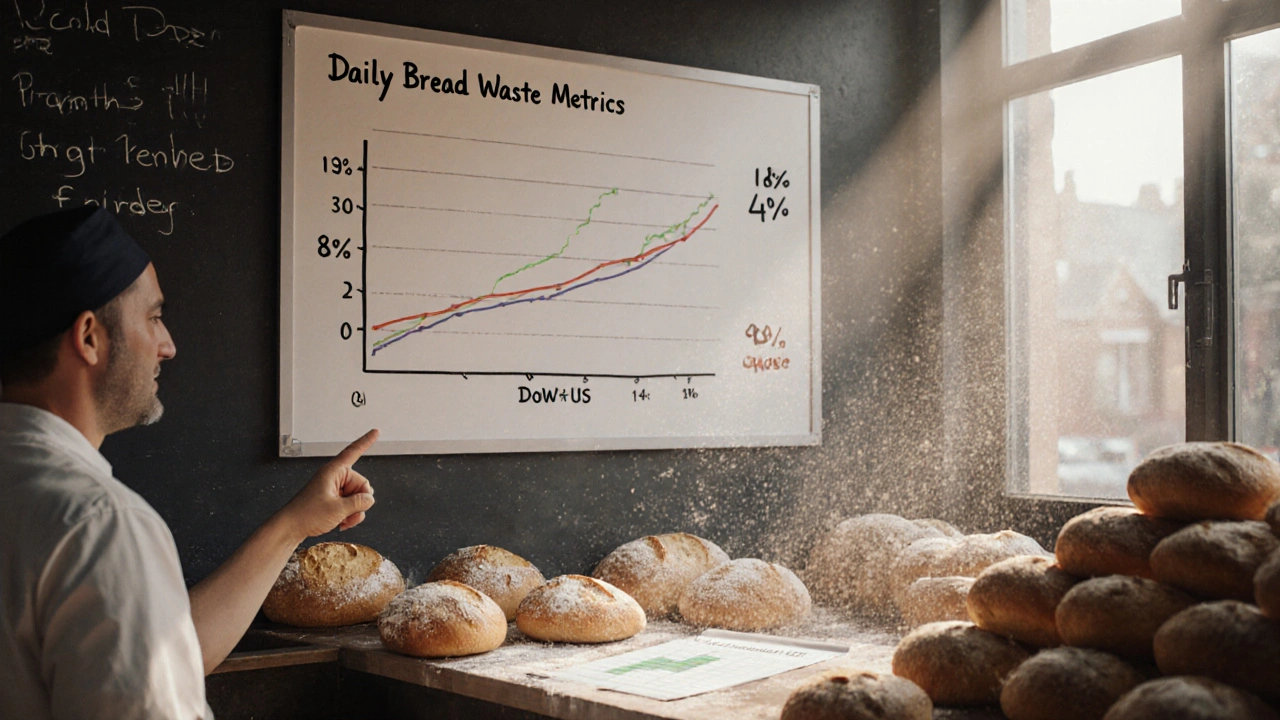Continuous Improvement in the UK: Using Metrics to Drive Enhancements
10 Nov, 2025Most UK businesses talk about continuous improvement. But how many actually know if they’re getting better? Talking about ‘doing better’ isn’t enough. If you can’t measure it, you can’t improve it. That’s the simple truth behind every successful operation-from small bakeries in Manchester to multinational firms in London.
Why Metrics Matter More Than Motivation
You can have the best team, the clearest vision, and the most inspiring mission statement. But without hard data, you’re flying blind. In the UK, companies that track the right metrics see 34% higher productivity over three years, according to a 2024 study by the Chartered Institute of Personnel and Development. That’s not luck. That’s measurement.Metrics turn guesswork into action. Instead of saying, “Our customer service is getting worse,” you say, “Average call resolution time increased from 8.2 minutes to 11.7 minutes over the last quarter.” Now you have a problem you can fix. Not a feeling you can debate.
Many UK businesses still rely on gut feelings or annual reviews. That’s like checking your car’s oil once a year and hoping for the best. Continuous improvement means checking it every week. And that starts with picking the right numbers.
Which Metrics Actually Move the Needle?
Not all metrics are created equal. Some look impressive but tell you nothing useful. Others are quiet, simple, and brutally honest.Here are the five metrics that actually drive improvement in UK businesses right now:
- First Contact Resolution (FCR) - What percentage of customer issues are solved on the first try? If it’s below 75%, you’re losing time, money, and trust.
- Process Cycle Time - How long does it take to complete a core task? For example, processing an invoice, onboarding a new employee, or delivering a product. Track this from start to finish, not just the ‘active’ parts.
- Employee Engagement Score - Measured quarterly through short, anonymous surveys. Companies with scores above 80% see 41% lower turnover and 21% higher profitability (Gallup, 2024).
- Defect Rate - How many products or services have errors? In manufacturing, it’s physical flaws. In services, it’s rework, complaints, or refunds. Aim to reduce this by 10% every quarter.
- Revenue per Employee - Total revenue divided by number of staff. If this number isn’t growing year-over-year, you’re either overstaffed or underperforming.
These aren’t vanity metrics. They’re diagnostic tools. Pick three that match your biggest pain point. Don’t try to track everything. Track what hurts.
How UK Companies Are Using Benchmarking to Stay Ahead
Benchmarking isn’t about copying your competitor. It’s about understanding where you stand relative to others doing similar work.In the UK, sectors like healthcare logistics, financial services, and retail have formed industry benchmarking groups. These aren’t secret clubs-they’re structured collaborations where companies share anonymised data to find gaps.
For example, a mid-sized logistics firm in Birmingham compared its delivery turnaround time to 12 other firms in the same region. They found they were 22% slower than the median. Turns out, their warehouse layout hadn’t changed since 2018. Redesigning the picking routes cut delivery time by 18% in six weeks.
Start small. Find one peer company in your sector with similar size and customer base. Ask: “What’s your average time to respond to a service request?” If you don’t know, you’re already behind.
The UK’s National Institute of Economic and Social Research (NIESR) publishes annual benchmarks for 17 key service sectors. You don’t need to be a big corporation to use them.

Setting Up a Simple Metric System (No Software Needed)
You don’t need expensive dashboards or consultants. Most small and medium businesses in the UK are running on spreadsheets and whiteboards-and they’re improving just fine.Here’s how to build your own system in under a day:
- Choose one process to improve. Pick the one that frustrates your team the most.
- Define the metric. What does “better” look like? (e.g., “Reduce order errors from 5% to 2%”)
- Track it daily. Use a simple spreadsheet with date, value, and a short note.
- Review weekly. Every Monday morning, spend 15 minutes looking at the trend. Is it going up or down?
- Act on the trend. If it’s going the wrong way, ask: “What changed last week?” Not “Why is this happening?”-that’s blame. Ask “What changed?”-that’s problem-solving.
One Sheffield-based bakery started tracking daily waste of bread. They found 18% of loaves were unsold by closing time. They switched to baking smaller batches twice a day. Waste dropped to 4%. Profit went up 12%.
That’s the power of a single metric, tracked consistently.
Common Mistakes That Kill Improvement Efforts
Most improvement programs fail-not because the ideas are bad, but because of how they’re handled.Here are the top three mistakes UK businesses make:
- Measuring too much - Tracking 20 KPIs means you’re not tracking any. Focus on 3-5. If you can’t explain what each one means in 10 seconds, drop it.
- Only measuring at the top - If your frontline staff don’t see the numbers, they won’t care. Share metrics openly. Put them on the breakroom wall.
- Linking metrics to punishment - If people fear being blamed for bad numbers, they’ll hide them. Metrics should be for learning, not firing.
One company in Cardiff stopped tying team bonuses to sales targets. Instead, they started rewarding teams that improved their internal process time by 10%. Sales went up anyway-because the team had more time to serve customers well.

What Happens When You Get It Right?
The results aren’t theoretical. They’re happening right now in UK businesses.A small engineering firm in Coventry reduced machine downtime by 31% in nine months by tracking “time between failures” and letting technicians suggest fixes. They didn’t hire new staff. They just listened to the data.
A community pharmacy chain in Scotland cut prescription errors by 67% after introducing a simple checklist and tracking error types weekly. They didn’t install new software. They just started asking: “What kind of mistake happened? And why?”
These aren’t tech giants. They’re ordinary businesses doing extraordinary things-because they stopped guessing and started measuring.
Continuous improvement isn’t about big transformations. It’s about small, consistent changes guided by real data. And in the UK, where efficiency matters more than ever, that’s the only way to stay competitive.
Getting Started Today
You don’t need permission. You don’t need a budget. You just need to pick one thing.Right now, open your last week’s work log. What task took too long? What error happened more than once? What did your team complain about?
That’s your metric.
Write it down. Track it for seven days. Share it with one colleague. Talk about it at your next team huddle.
That’s how real improvement starts.
What’s the difference between KPIs and metrics?
All KPIs are metrics, but not all metrics are KPIs. A metric is any number you track-like how many emails you send. A KPI is a metric that directly ties to a business goal-like how many of those emails lead to sales. Focus on KPIs that reflect your top priorities, not just what’s easy to count.
How often should I review my metrics?
Daily tracking works best for fast-moving processes like customer service or production. For slower areas like employee retention, weekly or monthly reviews are fine. The key is consistency. Reviewing quarterly is too late-you’ll miss the early signs of trouble.
Can small businesses benefit from benchmarking?
Absolutely. Benchmarking doesn’t require big data. Even comparing yourself to one similar local business gives you insight. The UK’s Business Benchmarking Network offers free templates for SMEs in retail, hospitality, and professional services. You don’t need to be a Fortune 500 company to know where you stand.
What if my team resists tracking metrics?
They probably fear being judged. Involve them in choosing what to track. Let them define what “better” looks like. When staff help build the system, they own it. Make the data visible to everyone-not just managers. Transparency builds trust, not tension.
Do I need special software to track these metrics?
No. Google Sheets, Excel, or even a whiteboard work fine-especially when you’re starting. Software is useful when you scale. But most improvement happens in the first 30 days with simple tracking. Don’t wait for the perfect tool. Start with what you have.
If you’re serious about getting better, stop waiting for a big initiative. Start with one number. Track it. Talk about it. Fix it. That’s how UK businesses are staying ahead-not by spending more, but by seeing more.
